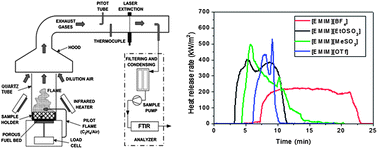An innovative experimental approach aiming to understand and quantify the actual fire hazards of ionic liquids
Abstract
The aim of the study is to provide advanced knowledge on the thermal and

* Corresponding authors
a
Institut National de l'Environnement Industriel et des Risques (INERIS), Parc Technologique Alata, BP2, 60550 Verneuil-en-Halatte, France
E-mail:
guy.marlair@ineris.fr
b UTC–ESCOM, EA 4297, Transformations Intégrées de la Matière Renouvelable, Centre de Recherches de Royallieu, BP 20529, F-60205 Compiègne Cedex, France
c University of Dayton Research Institute (UDRI), 300 College Park, Dayton, OH 45469, USA
The aim of the study is to provide advanced knowledge on the thermal and

 Please wait while we load your content...
Something went wrong. Try again?
Please wait while we load your content...
Something went wrong. Try again?
A. Diallo, A. B. Morgan, C. Len and G. Marlair, Energy Environ. Sci., 2013, 6, 699 DOI: 10.1039/C2EE23926D
To request permission to reproduce material from this article, please go to the Copyright Clearance Center request page.
If you are an author contributing to an RSC publication, you do not need to request permission provided correct acknowledgement is given.
If you are the author of this article, you do not need to request permission to reproduce figures and diagrams provided correct acknowledgement is given. If you want to reproduce the whole article in a third-party publication (excluding your thesis/dissertation for which permission is not required) please go to the Copyright Clearance Center request page.
Read more about how to correctly acknowledge RSC content.
 Fetching data from CrossRef.
Fetching data from CrossRef.
This may take some time to load.
Loading related content
